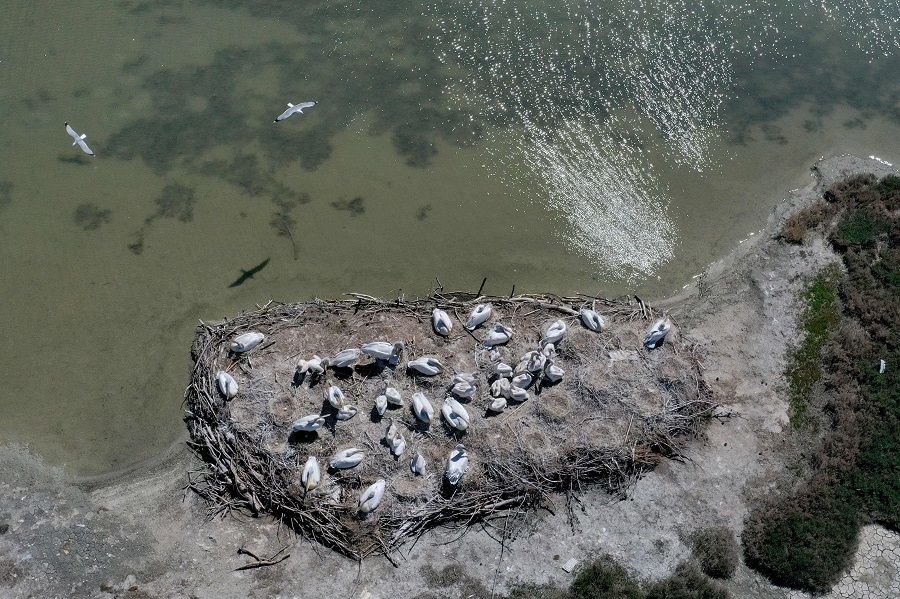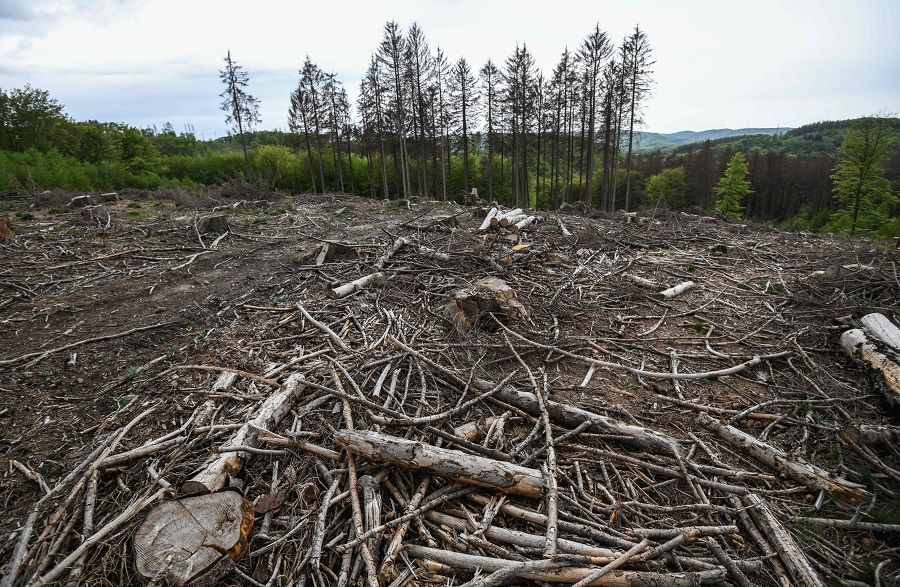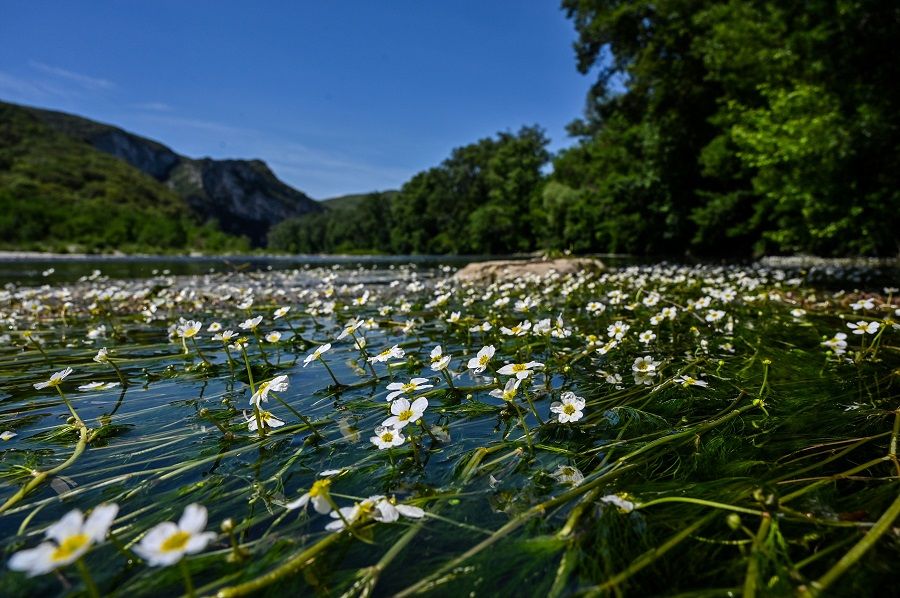The world has become greener because of Covid-19, but will it last?

Many have observed the positive effects of Covid-19 on the environment globally - a sharp decline in greenhouse gas emissions, noticeable improvements in air and water quality, and more frequent sightings of wildlife in urban areas.
Unfortunately, history suggests that these effects may be only temporary. Immediately after the global financial crisis of 2008-09, fossil fuel use, the consumption of huge stockpiles of raw materials and the inevitable spike in carbon emissions rebounded, as nations focused on the quickest path to economic recovery.
However, we may yet learn from our past mistakes. Some propose a different future when the Covid-19 pandemic subsides - a kinder, gentler and more caring society that prioritises health care, social services and environmental protection over the relentless pursuit of Gross Domestic Product as a main metric of economic growth.

Both the United Nations and the World Economic Forum suggest that Covid-19 may eventually give rise to a greener global future. There have been past attempts to develop alternative and more holistic indicators of social progress and human well-being, including the Green Gross Domestic Product, the Gross National Happiness index, and the Happy Planet Index.
Indeed, our ability to achieve green growth on our path to recovery may be critical for addressing an even greater, more insidious existential crisis, which is that of climate change.
Pandemic may jolt world into paying attention to climate change
According to the Intergovernmental Panel on Climate Change, even a 0.5°C difference in the level of global warming can significantly increase the risk of droughts, floods, extreme weather and poverty for hundreds of millions of people globally.
Climate change may reduce the productivity of agriculture, aquaculture and fisheries across the world. At the regional and local levels, climate change may affect food production and supply across Asia, ultimately compromising food security and livelihoods, especially in remote and vulnerable communities.

The Paris Climate Agreement - to which China is a signatory - commits countries to hold global warming to below 2°C above pre-industrial levels, and to pursue efforts to limit warming to 1.5°C. Achieving these ambitious targets requires countries to not only undergo the rapid decarbonisation of their energy sector, but also implement changes to policy and practices in agriculture, forestry and other land-use activities.
Globally these cost-effective land management strategies (nature-based climate solutions) could save up to 11 gigatonnes of CO2 per year - equivalent to about 80% of China's recent annual CO2 emissions (around13 gigatonnes in 2018).
In a 2017 study published in the scientific journal Proceedings of the National Academy of Sciences of the United States of America (PNAS), an international group of scientists reported that nature can provide 37% of the necessary climate mitigation between now and 2030, for a greater than 66% likelihood of achieving the 2°C target of the Paris Climate Agreement.
Pursuing nature-based climate solutions in China and Asia
These so-called "nature-based climate solutions" include the conservation, restoration and improved management of forests, wetlands and agricultural lands to increase carbon sequestration, reduce CO2 emissions, and enhance climate resilience.
Globally these cost-effective land management strategies could save up to 11 gigatonnes of CO2 per year - equivalent to about 80% of China's recent annual CO2 emissions (around 13 gigatonnes in 2018).

In the same way that low-emissions technologies and improvements in energy efficiency are worthwhile investments regardless of future climates, nature-based climate solutions are "no regrets" actions that both contribute to addressing climate change impacts and provide multiple benefits to society, including clean air and water, food security and livelihood opportunities.
The idea of nature-based climate solutions is gaining traction among international stakeholders across governmental, non-governmental and business sectors, including the United Nations Environment Programme, the International Union for Conservation of Nature, and the World Business Council on Sustainable Development, all of which have recently incorporated nature-based solutions in their institutional goals, strategies or initiatives.
In the case of China, there are ambitions to scale up the country's nationally determined contributions to meet the targets of the Paris Climate Agreement through nature-based solutions such as the restoration of forests, improvements in agricultural practices and protection of biodiversity, as announced by Ma Aimin, deputy director general of China's National Center for Climate Strategy and International Cooperation, during the 25th United Nations Climate Change Conference in Madrid in December 2019.
China and New Zealand co-led and launched a Nature-Based Solutions Coalition last year to commit to greater investments in climate science and finance to unlock the full potential of nature for climate action.
There are, however, considerable research-implementation gaps that need to be addressed to identify and realise the promise of nature-based climate solutions.
For example, the potential and limits of nature-based climate solutions for increasing carbon sequestration and reducing CO2 emissions across Asia are active areas of research.
Furthermore, the value of natural ecosystems as "green infrastructure" for enhancing climate resilience through processes such as biodiversity conservation, coastal protection and flood regulation remains unclear.

Quantifying the cost-effectiveness and viability of nature-based climate solutions for China and the Asia Pacific would help inform climate and land use policies for achieving climate mitigation and adaptation goals. In this aspect, China and New Zealand co-led and launched a Nature-Based Solutions Coalition last year to commit to greater investments in climate science and finance to unlock the full potential of nature for climate action.
...the country (China) has the potential to lead the discovery and delivery of innovative climate solutions in Asia, as well as globally.
Another key consideration is that nature-based climate solutions may not always align with other interests and priorities of society - climate policies favouring one set of actions can create barriers for others.
For example, the need of some rural communities to maintain their traditional livelihoods or expand their agricultural lands may compete with climate strategies that protect or restore forests for carbon storage and sequestration.
Similarly, the push for economic and infrastructure development, for example, through China's Belt and Road Initiative, may compete with climate strategies and actions in partner nations. The Chinese government has signalled its recognition of the need to balance these priorities by outlining its vision of a Green Belt and Road and working across ministries and international partners to help ensure sustainable development.
Identifying these potential opportunity costs and trade-offs is critical for ensuring the effective, collaborative and equitable implementation of climate solutions across Asia.

In 2017, China announced that it will invest $360 billion in renewable energy by 2020, and scrap plans to build 85 coal-fired power plants. The country is already by far the world's leader in electricity production from renewable energy and solar power technology. Given China's immense investments in scientific research and development - amounting to approximately 2 trillion RMB per year, significant infrastructure for test-bedding innovations and entrepreneurial environment for cross-sectoral collaborations, the country has the potential to lead the discovery and delivery of innovative climate solutions in Asia, as well as globally.
Innovations in science and technology can maximise the effectiveness of nature-based climate solutions, reduce barriers for their implementation, and create new solutions and economic opportunities.
For example, the development of real-time terrestrial-monitoring systems using satellite, civilian drone, machine learning and other novel technologies can help keep track of carbon stocks in forests, as well as enhance the timeliness and effectiveness of emergency responses during forest fires and other catastrophic events.

The Covid-19 pandemic has resulted in great suffering, economic hardships and a less livable planet. But it has also demonstrated that humanity is capable of transforming ourselves overnight to overcome an existential crisis. It has reawakened us to the fact that all people, all nations and all species are interconnected and interdependent. Perhaps most importantly, it has reminded us that we, humans, are an inextricable part of nature.
Global climate change will likely result in more planetary crises, more economic shocks, and more human suffering. But we now know that we have Nature on our side, as we face down these threats. We now know that we can and must be fighting with - not against - nature, as we re-start, re-invent and return to a cleaner, greener and more sustainable way of life.
